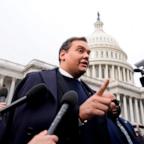Washington, D.C., braces for 'Lost Symbol' seekers
— -- The Da Vinci Code author Dan Brown's latest book, super-hyped The Lost Symbol, hits stores at 12:01 a.m. Tuesday. Can fans clutching dog-eared copies searching for real-life images from its pages be far behind?
Tourism honchos in Washington, where the story is set, are so confident the book will be a big tourist draw that they've already launched a website (washington.org/lostsymbol) steering Lost Symbol seekers to places presumably mentioned in it. The plot is under wraps, but carefully choreographed clues, being released via the Today show, Facebook and Twitter, point to Washington and Freemasonry.
At the Masonic House of the Temple, the Scottish Rite headquarters in Washington, the staff already has seen an uptick in visitation this summer and is prepared to hire new guides, if necessary. Tours of the 1915 building draw about 10,000 visitors a year.
Across the Potomac River, the towering George Washington Masonic National Memorial in Alexandria, Va., already attracts about 50,000 visitors annually. Executive director George Seghers says he doesn't expect a deluge of visitors as a result of Brown's book, but adds, "I hope it sparks some interest. I think it'll be good for us."
And at Mount Vernon, George Washington's Virginia home, interpreters have been prepped on the Founding Father's life as a Mason. A specialized tour may follow, says spokeswoman Melissa Wood.
The Da Vinci Code and Brown's earlier book, Angels and Demons, spawned multiple commercial tours of related sites in Paris, London and Rome. In 2006, Fodor's Travel Guides printed 150,000 copies of the Fodor's Guide to The Da Vinci Code and is in talks with Lost Symbol publisher Doubleday to produce an online guide, says spokeswoman Meg Rushton.
Among the Washington area sites likely to play in the plot:
•The U.S. Capitol. George Washington, clad in his Masonic apron, laid the cornerstone of the building, which contains a number of Masonic symbols.






